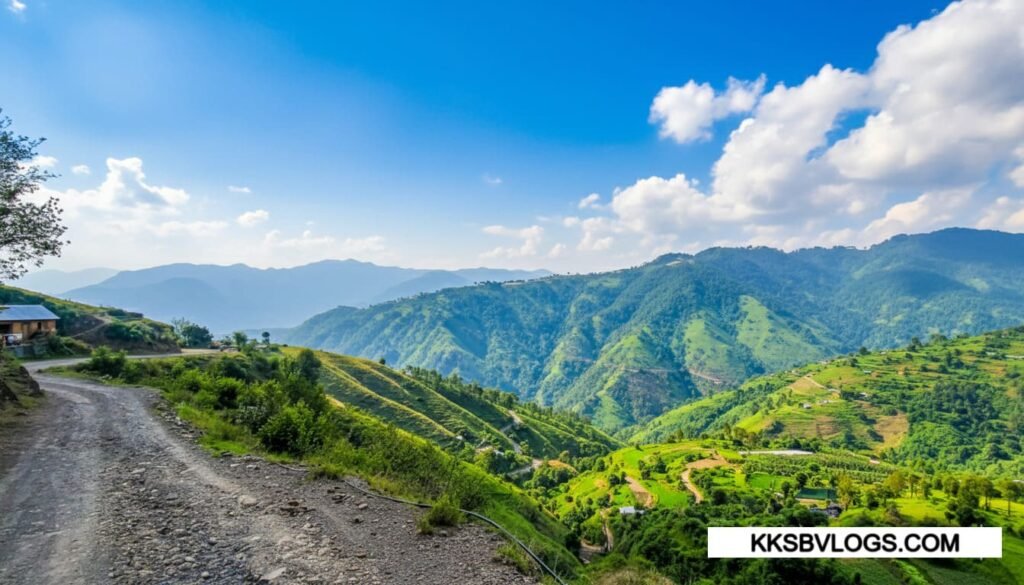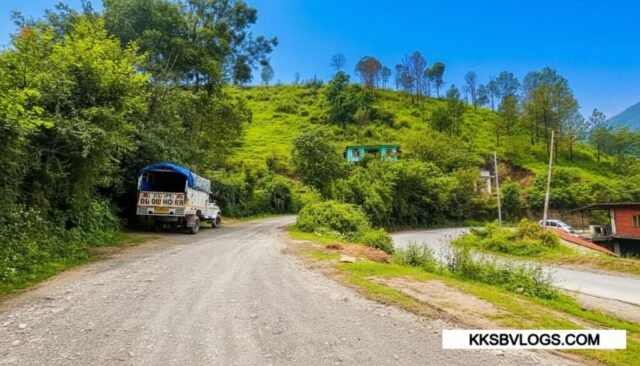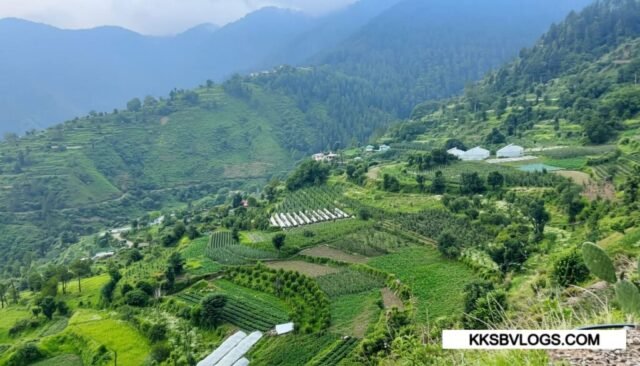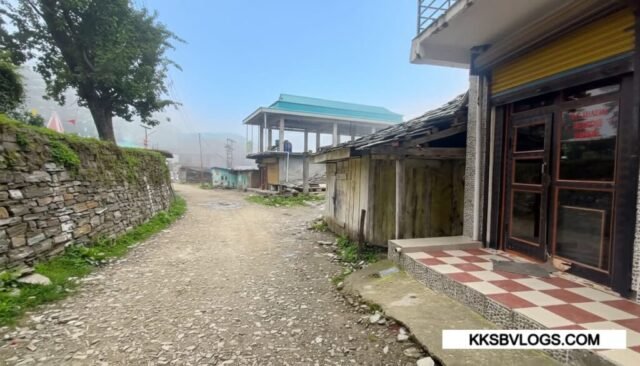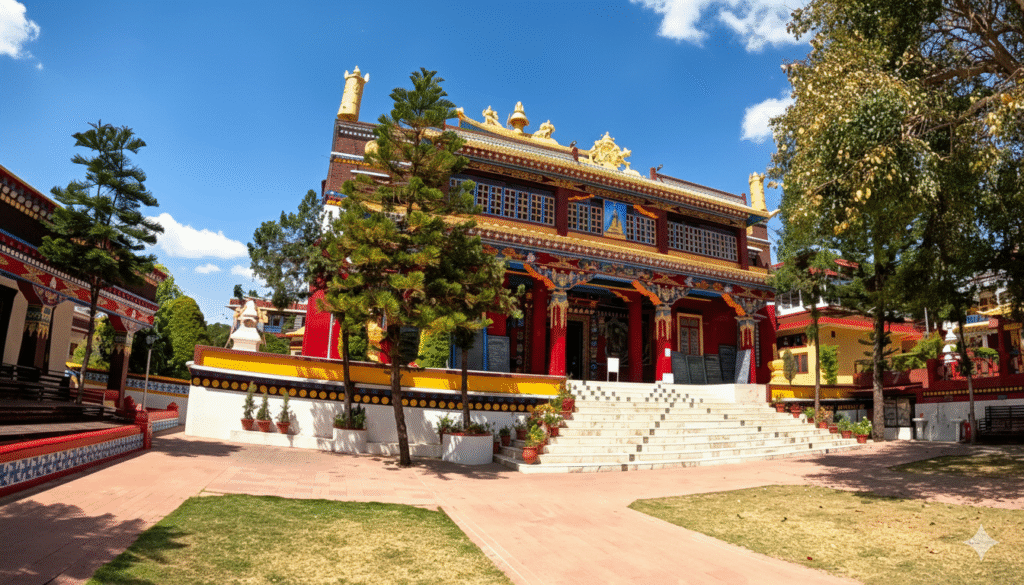1) Introduction
Imagine a valley where time slows down, where morning mist glides through deodar forests, and every breath smells of pine and wildflowers.
Welcome to Habban Valley, a quiet offbeat destination tucked inside Sirmaur district, Himachal Pradesh, at an altitude of nearly 2000 m.
Habban lies 30 km from Rajgarh, 90 km from Solan, and about 115 km from Chandigarh, yet it feels far removed from the tourist hustle of Shimla or Kasauli.
As you drive up from Rajgarh, the road narrows into a green tunnel of deodar and pine. Every turn opens a new frame—tiny slate-roofed houses on terraced slopes, gurgling mountain springs, and apple orchards glowing under soft sunlight. 🍏
🌟 What makes Habban Valley special
- Peace over popularity – no mall-road traffic, no loud cafés, only the sound of mountain birds and distant temple bells.
- Authentic Himachali life – homestays inside centuries-old orchard houses where meals are cooked on wood-fired chulhas.
- Natural abundance – thick forests alive with bulbuls, pheasants, and fragrant medicinal herbs.
- Offbeat photography haven – pastel spring blooms, emerald monsoon hills, copper-gold autumn orchards, and on clear winter nights, a Milky Way sky.
From sunrise treks to apple-picking afternoons and bonfire evenings, Habban Valley is a slow-travel dream.
Whether you are a writer seeking silence, a photographer chasing new frames, or a family craving pure Himachali hospitality, this valley promises a stay you will never forget. ✨
🏡 2) History & Local Life – Orchard Roots and Timeless Traditions
Habban’s charm lies as much in its people and traditions as in its landscapes.
Centuries before Instagram travellers discovered it, this valley was known for its orchards and self-sufficient villages.
2.1 Orchard Legacy
During the British era, nearby Rajgarh earned fame as the “Peach Bowl of Asia,” and Habban Valley naturally became part of this horticultural revolution.
Today almost every household owns apple, peach, plum, or apricot orchards, and the valley’s rhythm follows the orchard calendar:
- Spring: Pink-white apple blossoms carpet the slopes.
- Summer: Trees heavy with small green fruit sway in the mountain breeze.
- Harvest (Aug–Oct): Families and neighbours gather for apple-picking festivals. Folk songs echo across the valley, fresh juice is shared, and travellers are often invited to pluck and taste fruit straight from the branch.
This isn’t just farming—it’s community celebration.
Traditional knowledge of grafting, soil care, and natural pest control has been passed down for generations. Even today, orchard owners proudly demonstrate how to select the sweetest apple or turn it into juice and jam.
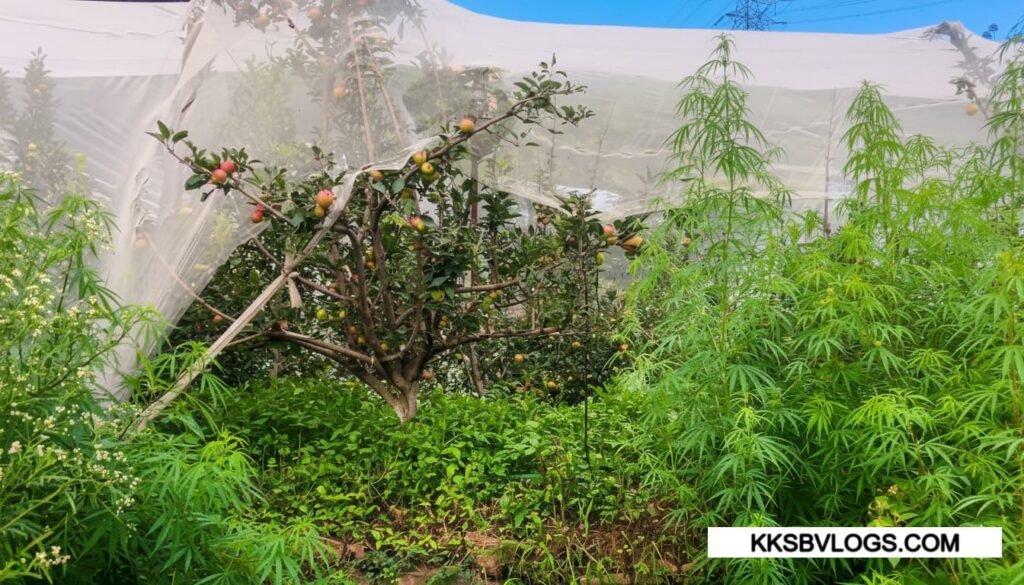
2.2 Villages & Architecture
Habban’s villages—like Kotla and Naina—are a living museum of Kath–Kuni architecture.
- Thick deodar beams and interlocked stone walls keep interiors cool in summer and warm in winter.
- Wooden balconies serve as natural dryers for maize, herbs, and fruits.
- Small village temples, dedicated to local deities like Bhangayani Mata or Shirgul Devta, add a spiritual heartbeat.
Festival days fill these courtyards with drums, nati dance, and colourful prayer flags.
2.3 Culture & Daily Life
Life here flows slowly but richly.
- Mornings begin with cowbells and the smell of wood smoke as women cook breakfast on traditional chulhas.
- Evenings bring bonfires and folk songs, with families gathering on verandahs.
- Guests are welcomed not as customers but as extended family.
It’s common for travellers to be invited for a cup of salty butter tea or a steaming Siddu — the valley’s most beloved delicacy (steamed wheat bread stuffed with walnut/poppy seed filling, drizzled with ghee). 🥟
These simple rituals—sharing food, joining a dance, listening to ancestral stories—turn a Habban visit into a living cultural experience, not just sightseeing.
3) Natural Beauty & Forest Landscape – A Living Green Symphony
If peace had a landscape, it might look like Habban Valley.
Encircled by the Shivalik foothills and carpeted with deodar, pine, oak, and rhododendron forests, the valley is a year-round painting whose colours change with every season.
3.1 Seasonal Magic
- Spring (Mar–May): Apple & peach blossoms paint the hills pink and white; wildflowers like daisies and primroses bloom along trails. Mornings are crisp, afternoons pleasantly warm—perfect for forest walks and photography.
- Summer (June): At ~2000 m altitude, temperatures rarely cross 22 °C. Clear skies and long days invite multi-hour hikes or reading under apple trees.
- Monsoon (Jul–Sep): Rains turn meadows into emerald velvet; mist rolls over deodar canopies and tiny waterfalls sparkle on cliffs.
- Autumn (Oct–Nov): After harvest, orchards glow copper and gold, and skies stay crystal-clear — the best season for stargazing and photography.
- Early Winter (Dec–Jan): Occasional light snowfall covers rooftops and trails in soft white. Mornings begin with frost on leaves and evenings with warm bonfires.


3.2 Wildlife & Forest Secrets
These forests are alive with Himalayan wildlife:
- Birds: Himalayan bulbuls, woodpeckers, drongos, pheasants, and seasonal migratory species
- Mammals: Barking deer and Himalayan langurs near forest edges
- Flora: Medicinal herbs like kafal, wild thyme, and rare mushrooms
Walking these trails feels like entering a natural meditation hall—soft pine-needle carpet underfoot, filtered sunlight through tall deodars, and the gentle music of distant streams.
3.3 Panoramic Valley Views
From hilltop clearings, travellers enjoy 360° vistas of:
- Rajgarh hills and surrounding orchard slopes
- The distant snow-clad Churdhar Peak
- Rolling valleys stretching towards Nahan and Renuka Ji Lake
Sunrise paints these vistas in orange and pink, while sunset sets them on fire with gold.
For photographers and writers, Habban’s landscapes are endless inspiration. 📸
4) Things to Do in Habban Valley
Habban Valley is a destination where slow travellers, photographers, families, and nature lovers can enjoy life at their own pace.
Here, you’ll find adventure along with the warm touch of pure Himachali hospitality.
4.1 Forest Walks & Short Hikes
As the first rays of sun filter through deodar trees, the forest trails turn into a natural meditation hall.
- Trails are soft with pine needles, easy even for beginners and kids.
- The forest echoes with birdsong—from Himalayan bulbuls to drongos.
- Some trails open into clearings where snow-clad Churdhar Peak is visible.
A popular half-day walk is Habban Valley to Naina village, through apple orchards, where you can enjoy tea with locals.
Both misty mornings and late-afternoon golden light create perfect photography opportunities. 📸
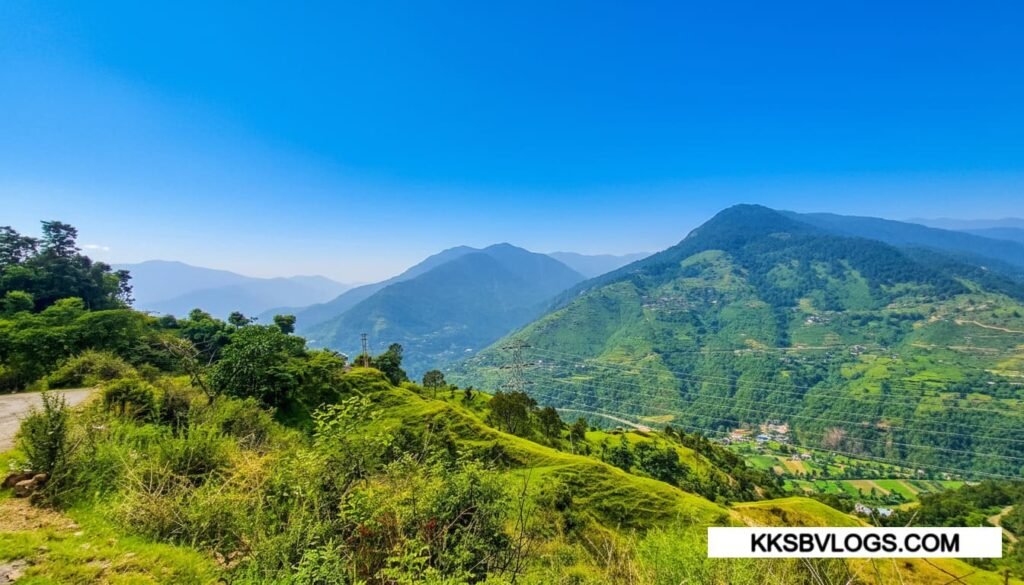
4.2 Orchard Experience & Apple Picking
The August–October harvest season is when Habban Valley’s real magic shines.
- Orchard owners invite travellers to pluck and sort apples.
- Taste freshly picked fruit, press juice on traditional wooden crushers, and even learn to make apple jam or cider.
- For kids, it feels like a storybook adventure.
Many homestays offer complete orchard-life packages:
Early-morning blossom walks, daytime fruit picking, and evening bonfires with warm cider.
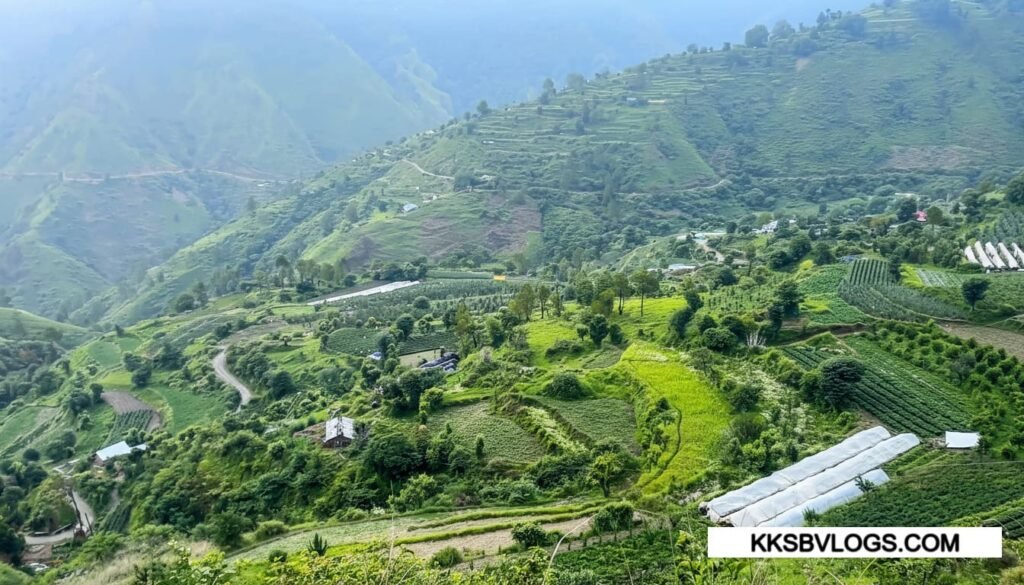
4.3 Local Culture & Folk Evenings
Evenings in Habban are filled with pure Himachali flavour.
- Around a bonfire, locals perform nati dance and play dhol-nagada music.
- Village elders share legends of Bhangayani Mata and Shirgul Devta, adding a spiritual layer to the night.
This cultural intimacy is something crowded hill stations rarely offer.
4.4 Food Trails – Siddu and Beyond
No Habban trip is complete without tasting Siddu, the pride of Himachali kitchens.
- Soft wheat bread steamed for hours, stuffed with walnuts or poppy seeds, and served with hot desi ghee or tangy green chutney.
- The slow steaming makes Siddu spongy and aromatic, perfect with evening chai.
Homestays also serve rajma-chawal slow-cooked on chulha, sepu badi (urad-dal dumplings in yogurt gravy), and ghee-rich halwa.
Herbal teas made from local mint and wild thyme add a fragrant finishing touch.
4.5 Offbeat Photography & Stargazing
Every corner of Habban is a natural photo studio:
- Pink-white apple blossoms in spring
- Emerald forests in monsoon
- Copper-gold orchards in autumn
- Crystal-clear Milky Way skies in winter
Astrophotographers can set up tripods in orchard clearings for night-sky shots you’ll never forget.
4.6 Kali Mata Temple – The Divine Shrine on Top of Habban Valley
At the very top of Habban Valley, surrounded by thick deodar forests and endless peace, stands a beautiful and serene temple of Maa Kali.
Locals believe this sacred temple protects the valley and blesses everyone who visits. The atmosphere here is filled with silence, cool mountain breeze, and divine energy — making it one of the most peaceful spiritual spots in the entire region.
From the temple’s height, you can see the panoramic view of lush green Habban, small villages, and distant mountains — a perfect blend of spiritual calm and natural beauty.
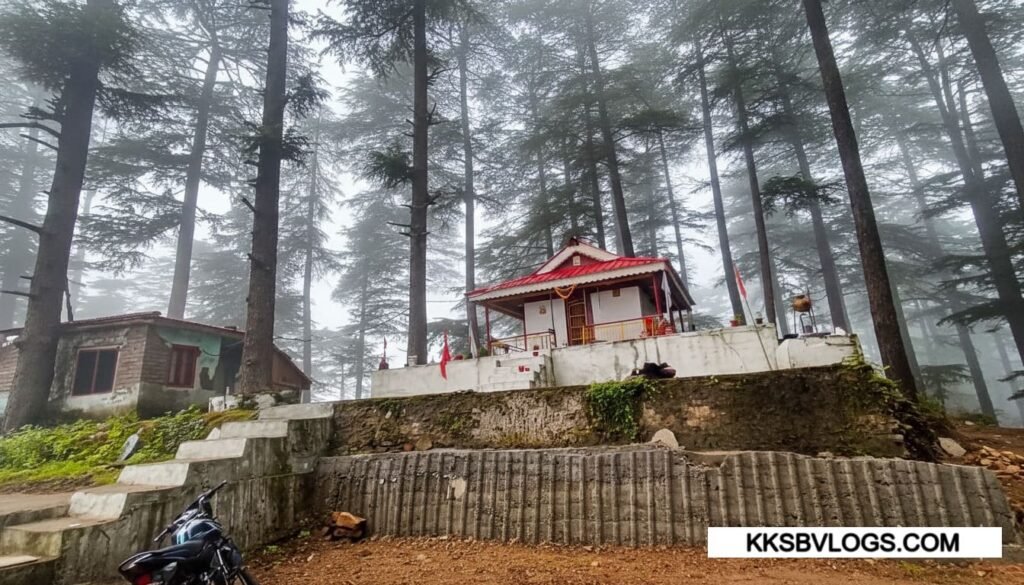
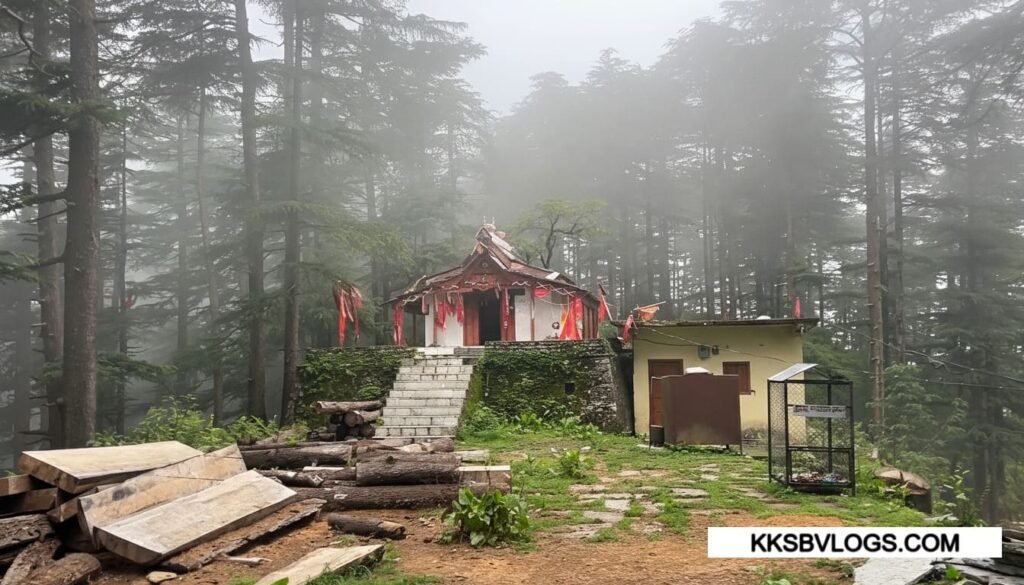
5) Best Time to Visit Habban Valley
Habban Valley is beautiful all year round, and each season brings a different personality.
| Season | Temperature | What’s Special |
|---|---|---|
| Spring (Mar–May) | 15–22 °C | Apple & peach blossoms, wildflowers, ideal for hiking & photography |
| Summer (Jun) | 18–22 °C | Cool escape from plains; long daylight for orchard walks & forest picnics |
| Monsoon (Jul–Sep) | 15–20 °C | Valley turns emerald green, mist and waterfalls create dreamy scenery |
| Autumn (Oct–Nov) | 10–18 °C | Apple harvest season, copper-golden orchards, best for stargazing and clear sunrise/sunset shots |
| Early Winter (Dec–Jan) | 5–10 °C | Occasional light snowfall, quiet mornings with frost-kissed trails—perfect for writers & photographers |
💡 Pro tips:
- Apple lovers & orchard tourists should come August–October.
- Photographers & trekkers will love March–June and October–November for crystal-clear skies.
- Carry warm clothes year-round, as nights remain cool even in May.
6) How to Reach Habban Valley
Despite its hidden feel, Habban Valley is well connected by road.
🚗 6.1 By Road (Best Option)
- From Solan: ~90 km / 3–4 hrs via Rajgarh
- From Chandigarh: ~115 km / 4–5 hrs via Solan–Rajgarh
- From Nahan: 120 km / 3.5 hrs via Renuka Ji – Rajgarh
Driving tips:
- Start early morning for sunrise views and light traffic.
- The last 20–25 km road is narrow and winding but well maintained—drive slow and stop at village tea stalls for local chai.
- Private cab or own car is ideal. Local buses reach Rajgarh, but for the final stretch to Habban, shared jeeps or hired taxis are best.
🚉 6.2 By Train & Air
- Nearest Railheads: Solan (90 km) and Kalka
- Nearest Airport: Chandigarh (~115 km)
From these points, you can hire a taxi or take a bus to Rajgarh, and then a cab to Habban.
7) Stay & Food Option In Habban Valley
Unlike commercial hill stations filled with concrete hotels, Habban Valley is known for its authentic homestay culture.
Staying here means becoming part of a Himachali family. ❤️
7.1 Orchard Homestays & Eco Cottages
- Family-run orchard houses with wood-fired kitchens and wooden balconies overlooking apple trees
- Eco-friendly cottages and a few tented camps for those seeking a forest camping vibe
Most hosts happily arrange:
- Apple-picking and jam-making workshops
- Guided forest walks and evening bonfires
- Folk music sessions and storytelling nights
7.2 Food – Siddu: The Star of the Table
Meals here are truly farm-to-table.
- Breakfast may include fresh orchard fruit and Siddu
- Lunch often features slow-cooked rajma-chawal
- Dinner ends with herbal tea brewed from local mint and wild thyme 🌿
⭐ Siddu deserves special mention.
This soft, steamed bread is stuffed with walnut or poppy seeds and served with pure desi ghee—a perfect combination of comfort food and heritage.
Evenings often turn into community feasts, where travellers join locals for nati dance and folk songs under starlit skies.
These simple, soulful meals and warm conversations create memories that last long after the trip ends.
8) Visitor Information For Habban Valley
Habban Valley is ideal for weekend getaways, family holidays, and slow travellers looking for authentic Himachali life.
Before packing your bags, keep these practical details in mind:
8.1 Entry & Timings
- Habban is a natural valley, not a ticketed park.
- You can visit 24×7, but the best experience is between sunrise and sunset, especially for photography and forest walks.
8.2 Duration & Itinerary
- Weekend Escape (2 days): Perfect for families and couples.
- Day 1: Orchard walks and folk evening
- Day 2: Forest hike and apple picking
- Slow Travel Retreat (4–5 days): Ideal for writers, photographers, or a digital detox.
- Live like a local, learn orchard farming, and simply breathe mountain silence.
8.3 Facilities
- Stay: Orchard homestays and eco cottages with clean rooms and hot meals
- Food: Traditional Himachali dishes—Siddu, rajma-chawal, sepu badi, ghee-rich halwa, and herbal tea made with local mint and thyme
- Connectivity: BSNL mobile network works best; other networks are patchy
- Cash: Carry cash as digital payments may fail
- Medical & Shops: Basic grocery and first-aid available in nearby villages
8.4 Travel Tips
- Pack warm clothes even in summer; nights can be cool.
- Carry a raincoat and non-slip shoes if visiting during monsoon.
- Respect local customs: remove shoes before entering homes or temples, and join community meals at set times.
- Photography is welcome, but ask permission before photographing villagers.
9) Our Experience In Habban Valley
Our Habban Valley Himachal Pradesh trip was an unforgettable slow-travel journey, where every moment unfolded in natural rhythm.
Morning Arrival
Driving from Rajgarh, we were welcomed by pink dawn skies, mist-filled valleys, and deodar forests.
The first glimpse of Habban Valley was breathtaking: apple orchards shimmering in morning dew, smoke rising from wooden rooftops, and the soft sound of distant temple bells.
Orchard Homestay Welcome
Our host greeted us with a warm smile from a wooden balcony, serving freshly steamed Siddu and chai.
One bite revealed heritage on a plate—soft bread stuffed with walnut-poppy seed mix, topped with warm ghee.
Forest Walk & Photography
After breakfast, we set off on a forest trail walk.
- Soft pine-needle carpet underfoot
- Golden sunlight filtering through deodars
- Himalayan bulbuls calling from treetops
It felt like a natural meditation hall.
Halfway, a clearing opened to reveal distant snow-capped Churdhar Peak—a photographer’s dream. 📸❄️
Evening Folk Dance & Bonfire
By evening, our homestay courtyard turned into a mini festival.
Villagers performed nati dance, dhol-nagada music filled the air, and children laughed around the bonfire.
Dinner was pure Himachali comfort: rajma-chawal slow-cooked on chulha, orchard-fresh salad, and wild-thyme herbal tea.
Night Sky Magic
The night’s highlight was the Milky Way sky, with thousands of stars sparkling over silent forests.
Wrapped in blankets, sipping warm apple cider, we felt how time truly slows down in Habban.
Next Morning Apple Picking
Next day, we joined the family in apple plucking.
Climbing small wooden ladders, picking sun-kissed apples, and packing them in traditional bamboo baskets was both fun and grounding.
As we left, our hosts gifted a basket of fresh apples—a sweet memory of Habban’s unmatched hospitality.
10) Nearby Attractions At Habban Valley
The surroundings of Habban Valley make any trip even more vibrant.
Create a 3–4 day circuit to enjoy a full blend of nature, culture, and spirituality.
1 Rajgarh – The Peach Bowl of Asia
Rajgarh’s slow market is full of fresh fruit aromas and old Himachali houses.
Stroll through the bazaar, sip fresh peach juice, and shop for handwoven shawls.
Rajgarh also serves as the main gateway to Habban.
2 Haripurdhar & Bhangayani Mata Temple
This spot offers high-altitude meadows and the Bhangayani Mata Temple with its spiritual charm.
Clear days reward travellers with panoramic snow-range views and a taste of pure Himalayan air. 🌬️
3 Churdhar Trek (Nohradhar Base)
For adventure lovers, the Churdhar Trek (3,647 m) is perfect.
Dense forests, alpine meadows, and the Chureshwar Mahadev temple at the summit create an unforgettable trekking experience.
4 Nahan Town
The heritage capital of Sirmaur, Nahan offers:
- Rani Tal garden 🌸
- Jagannath Temple 🛕
- Old colonial lanes with lively food streets perfect for evening walks.
5 Renuka Ji Lake
Himachal’s largest natural lake is ideal for boating, temple darshan, and enjoying the famous November Renuka Fair, which celebrates the legend of Renuka Mata.
These nearby destinations make Habban Valley perfect for a long weekend circuit, combining orchard life with culture, history, and spiritual serenity.
11) Habban Valley Location Photos & Video
YouTube Video:Coming soon on – KKSB Vlogs
Instagram Updates: Stay connected with us for reels and updates– @official_kksb
Habban Valley Photos
Habban Valley Location
11) FAQs about Habban Valley
Where is Habban Valley located?
Habban Valley is in Sirmaur district, Himachal Pradesh, near Rajgarh at about 2000 m altitude.
It is ~90 km from Solan and ~110 km from Chandigarh.
What is Habban Valley famous for?
It is known for its dense deodar forests, apple orchards, and authentic Himachali homestay culture.
Local delicacy Siddu is the valley’s most loved food item. 🥟
What is the best time to visit?
March–June: Blossoms & cool hikes
August–October: Apple picking & cultural festivals
October–November: Clear skies & stargazing
Early winter may bring light snowfall. ❄️
How are the stay options?
The best stays are family-run orchard homestays and eco cottages.
Hosts serve home-cooked meals, arrange folk evenings, and offer apple-picking activities. 🏡
What activities can visitors enjoy?
Forest hikes, apple picking, village culture experiences, offbeat photography, stargazing, and authentic dishes like Siddu, sepu badi, and herbal teas.
Is it safe for families and kids?
Absolutely.
Easy forest walks, warm locals, and clean homestays make it ideal for families.
Carry warm clothes and rain gear during monsoon. 🌦️
How is mobile network and basic facility availability?
BSNL JIO works best; other networks are patchy.
Basic grocery shops and first aid are available.
Carry cash, as digital payments may not always work.
Which spots are best for photography?
Apple orchards during blossom or harvest
Deodar forest clearings at sunrise
Homestay rooftops for breathtaking Milky Way night photography 🌌
Is Habban Valley safe for solo travellers?
Yes.
The locals are warm and helpful, and the peaceful environment is perfect for solo nature or writing retreats.
What are the key nearby attractions?
Top nearby places include Rajgarh, Shaya Temple near Rajgarh Haripurdhar & Bhangayani Mata Temple, Churdhar Trek, Nahan Town, and Renuka Ji Lake.
Habban Valley Himachal Pradesh is a hidden jewel of Sirmaur—offering slow-travel magic, starry-night skies, apple orchards, and soulful Himachali hospitality.
Whether you come for forest walks, photography, orchard life, or peaceful family time, this valley promises an authentic mountain experience to cherish forever. 🌄🍏✨

